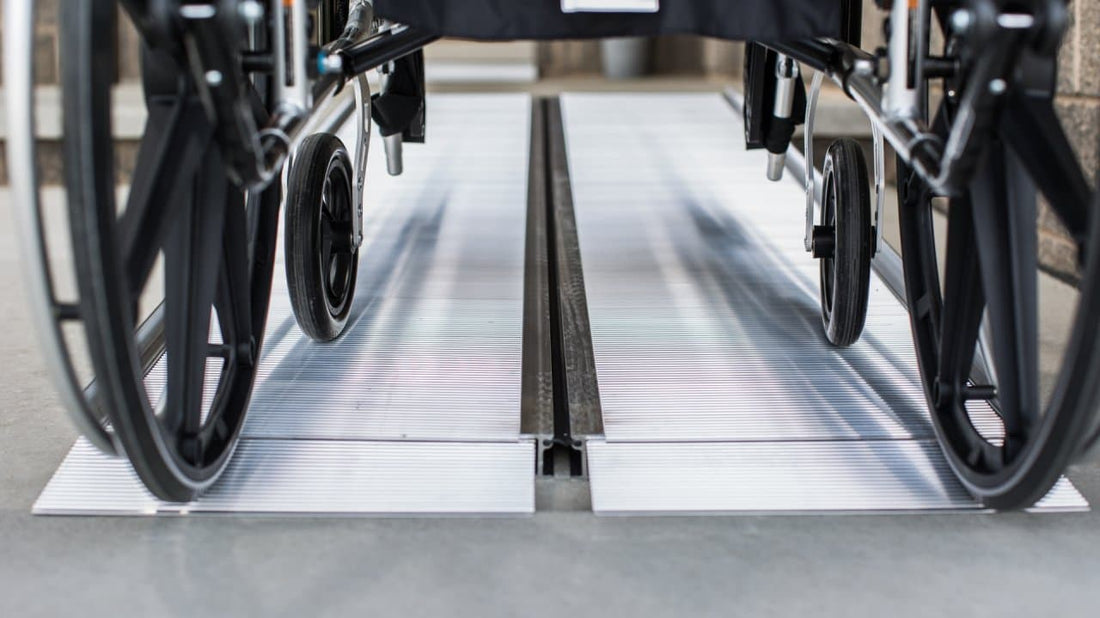According to the Centers for Disease Control and Prevention (CDC), 61 million American adults live with a disability. When you or a loved one are living with a disability, it can be difficult to get around in public, but it can even be a challenge to navigate your own house. That is if you don’t live in a handicap accessible home. Stairs, bathrooms, and other common areas quickly turn into a danger zone, making it unsafe to independently access and use these rooms. Thankfully, there are many different things you can do to improve the safety and functionality of your living space. You don’t have to be limited when your home is customized for your specific needs.
How to Create a Wheelchair-friendly Home
Wheelchairs can make getting in and out of places a frustrating and exhausting experience, no matter if someone is pushing the other person or the person is moving themselves. But, with some modifications, moving about can be made much easier.
- Eliminate Obstacles: Wheelchairs require ample space to move around. Obstacles like furniture, electrical cords, and cables, open drawers, etc., can hinder movement. Be sure to create a clear path through the home to ensure easy access to any room.
- Install Wheelchair Ramps: One of the hardest things to do when you’re disabled is to tackle stairs. To make this easier on you or your loved one, install wheelchair ramps on the exterior of your home, leading from your doorways to your sidewalk.
- Install Stair Lifts or Elevators: If your home is a bi or tri-level, you’ll probably want to install a stair lift in order to easily access all levels. This way, the disabled person can travel quickly and conveniently up or down an entire flight of stairs without much effort.
-
Widen Doors: Standard doorways are usually too narrow to accommodate a wheelchair. According to the Americans with Disabilities Act (ADA), doors are supposed to be at least 32 inches wide. While this is a more extensive modification, it may need to be done, especially for the most common areas trafficked.
-
Lower the Bed Height: People in wheelchairs are situated at a lower level than those who are standing, and as a result, they can have a hard time transferring from their chair into their bed at night. Bringing the bed down to their level can make going to bed and getting up a much more straightforward and less tiresome process.
-
Lower Appliances: Similar to the bed height, you’ll want to lower your kitchen and other household appliances, if possible, to make it easier to reach certain items and accomplish different tasks. For example, installing a shelf in your lower cabinets to place the microwave can be a huge step.
- Switch to Hard Floor Surfaces: Carpet and rugs can get hung up on the wheelchair’s wheels, making it tough to keep moving. Changing to harder floor surfaces such as hardwood, tile, or laminate can solve this common household problem.
- Add a Roll-In Shower or Tub with Grab Bars: The bathroom can be one of the most dangerous places for those who are disabled. Installing a roll-in shower or tub can allow the person to enter the shower without getting out of their chair. Adding grab bars at sitting level will also make it easier and safer for those who want to stand while bathing.
Inexpensive Ways to Make Your Home Handicap Accessible
Contrary to popular belief, you don’t have to spend an arm and a leg to create a handicap accessible home. Although some home modifications can be pricey, there are a variety of inexpensive ways to make life easier for you or your loved one with restricted mobility. And sometimes, you just have to get a little creative!
Here are a few low-cost ideas to consider:
- Add Handrails in the Bathrooms
- Install Bathtub, Shower, and Toilet Grab Bars
- Install Portable Wheelchair Ramps
- Raise the Toilet Seat Up
- Switch Door Hinges or Reverse the Swing to Create More Space
- Rearrange Your Furniture to Create Obstacle-Free Zones
- Install Additional Lighting Fixtures
- Remove Interior Doors and Replace with Curtains for Easy Access
- Install a Handheld Shower Head for Easy Bathing
We’re experts in mobility and accessibility solutions. Our skilled team of specialists has helped countless people live comfortably and safely in their homes, thanks to accessibility improvements. Whether you’re looking for wheelchair ramps, bath safety enhancements, or another handicap-accessible product, we’re here for you. Give us a call today at 800-451-1903.

